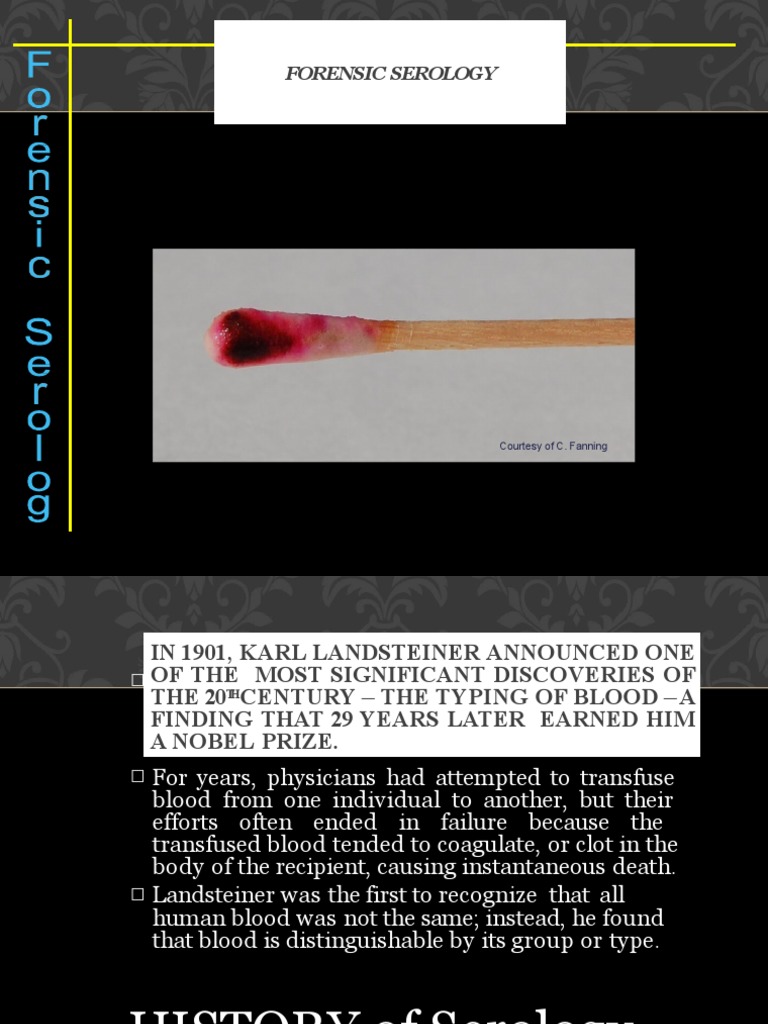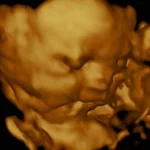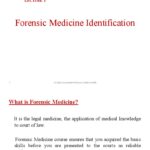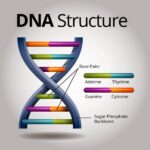Ever wonder how a seemingly invisible trace of blood can unlock the secrets of a crime scene? Forensic serology, the study of bodily fluids, stands as a cornerstone in criminal investigations. It bridges the gap between the biological realm and the pursuit of justice. But how exactly does this intricate field contribute to solving the puzzle of a crime? Let’s delve into the multifaceted applications of serology in forensic investigations.
I. Identification of Biological Fluids: The Foundation of Forensic Serology
The first crucial step in any forensic serological examination involves identifying the type of biological fluid present at a crime scene. Distinguishing between blood, semen, saliva, urine, and other bodily fluids is paramount. Presumptive tests, such as the Kastle-Meyer test for blood, are employed to indicate the possible presence of a specific substance. These tests are highly sensitive but not entirely specific. A positive result warrants further, confirmatory testing. Luminol application, for instance, can reveal latent bloodstains invisible to the naked eye, allowing investigators to visualize bloodstain patterns.
Confirmatory tests, like the ABAcard HemaTrace test for blood and microscopic examination for spermatozoa, provide definitive identification. These tests confirm the presence of specific components unique to each fluid, eliminating ambiguity and ensuring accuracy. In the context of sexual assault cases, the identification of semen is obviously a critical element in evidence collection and analysis.
II. Bloodstain Pattern Analysis: Deciphering the Narrative of Spilled Blood
Bloodstain pattern analysis (BPA) is an art and a science. It involves the careful examination of the size, shape, distribution, and location of bloodstains to reconstruct the events that transpired during a violent crime. The angle of impact, velocity, and directionality of blood droplets can provide valuable clues about the weapon used, the position of the victim and assailant, and the sequence of events.
For example, high-velocity impact spatter, often associated with gunshot wounds, produces a fine mist of tiny droplets. Conversely, dripping blood creates larger, circular stains. The analysis of these patterns can corroborate or contradict witness statements, providing a more accurate account of the incident. BPA requires specialized training and a thorough understanding of fluid dynamics and biomechanics.
III. Blood Typing: Categorizing and Connecting Individuals
Blood typing, or blood grouping, is a fundamental serological technique used to classify blood according to its ABO and Rh characteristics. While not as definitive as DNA analysis, blood typing can be a valuable tool for excluding suspects or establishing connections between individuals and crime scenes. If a suspect has type B blood, and the blood at the scene is type A, then they can reasonably be excluded.
The ABO blood group system classifies blood based on the presence or absence of A and B antigens on the surface of red blood cells. The Rh factor, another significant blood group system, determines whether a person is Rh-positive or Rh-negative. Blood typing is a relatively quick and inexpensive method for narrowing down the pool of potential suspects.
IV. DNA Analysis: The Gold Standard of Forensic Identification
While serology encompasses the identification and characterization of bodily fluids, DNA analysis has become the gold standard for forensic identification. DNA, the genetic blueprint of an individual, is present in most cells of the body. Forensic DNA analysis involves extracting DNA from biological samples, amplifying specific regions of the DNA, and comparing the resulting DNA profiles to known samples or databases.
The power of DNA analysis lies in its ability to provide a unique genetic fingerprint for each individual (except for identical twins). This allows for highly accurate identification of suspects, victims, and even unidentified remains. DNA analysis has revolutionized forensic science, providing investigators with an unprecedented level of precision and certainty.
V. Immunoassay Techniques: Detecting Specific Substances
Immunoassay techniques are employed to detect the presence of specific substances in biological fluids. These techniques rely on the principle of antibody-antigen interaction. Antibodies are proteins produced by the immune system that specifically bind to foreign substances called antigens. By using antibodies that target specific drugs, toxins, or other substances of interest, forensic scientists can determine whether these substances are present in a sample.
Enzyme-linked immunosorbent assay (ELISA) is a common immunoassay technique used in forensic toxicology. ELISA can detect a wide range of substances, including drugs of abuse, poisons, and environmental contaminants. Immunoassay techniques play a crucial role in investigating drug-related crimes, homicides, and other cases where toxicology is a factor.
VI. Challenges and Future Directions in Forensic Serology
Despite its significant contributions to forensic science, serology faces several challenges. Contamination of samples, degradation of DNA, and limitations in the sensitivity of certain tests can all affect the accuracy and reliability of results. Furthermore, the increasing complexity of crime scenes and the proliferation of new drugs and toxins require constant innovation and adaptation.
Future directions in forensic serology include the development of more sensitive and specific tests, the automation of analytical procedures, and the integration of new technologies, such as microfluidics and nanotechnology. As the field continues to evolve, forensic serology will remain an essential tool for solving crimes and ensuring justice.
In conclusion, forensic serology is a multifaceted discipline that plays a vital role in criminal investigations. From identifying biological fluids to analyzing bloodstain patterns and conducting DNA analysis, serological techniques provide investigators with valuable insights into the circumstances surrounding a crime. While challenges remain, ongoing advancements in technology and methodology promise to further enhance the power and precision of forensic serology in the pursuit of truth and justice.










Leave a Comment